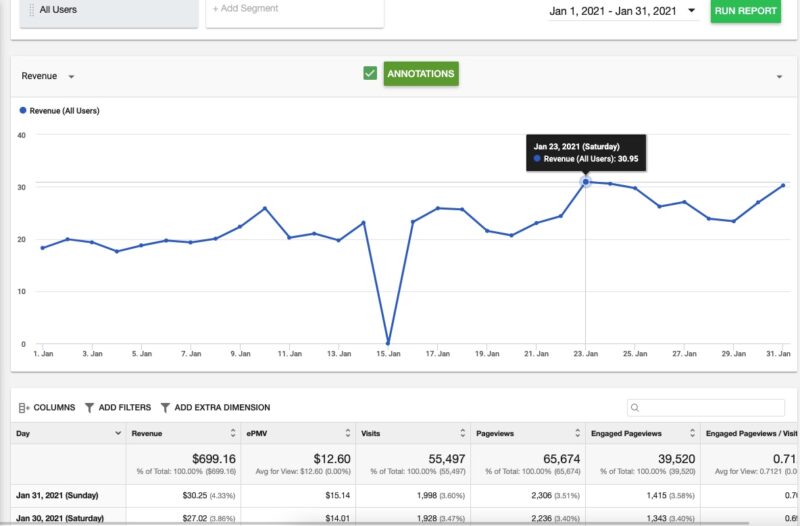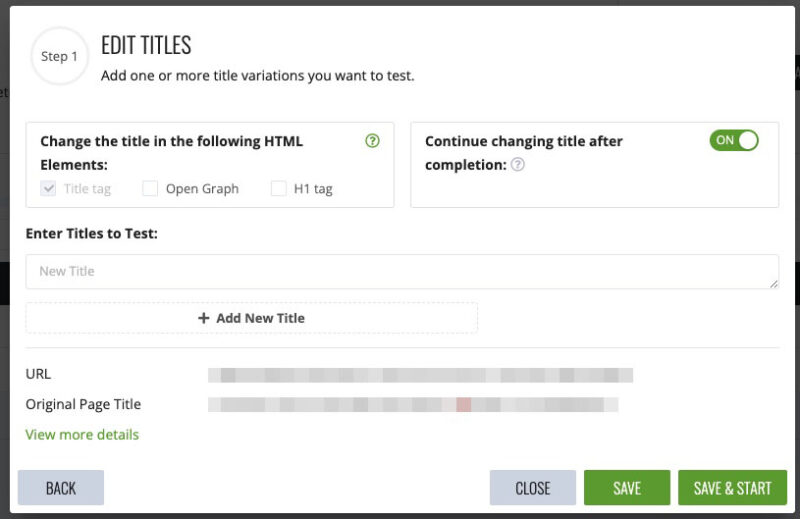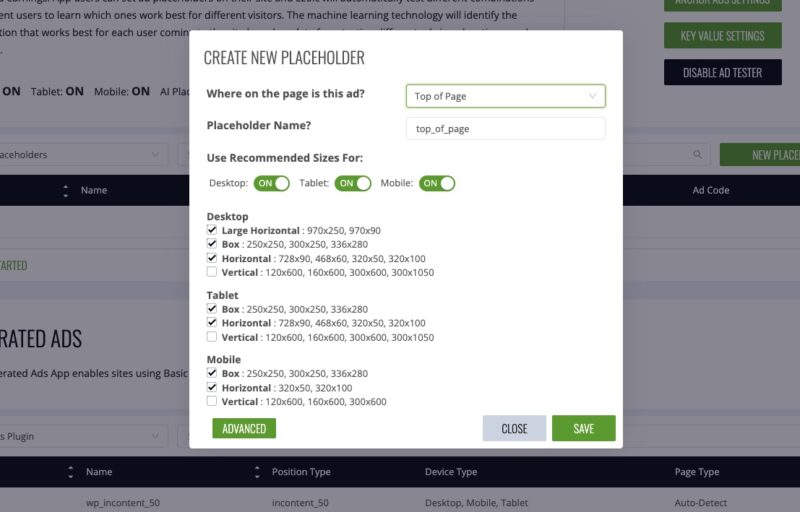One of the most important aspects of online advertising that is often forgotten is relevancy. If you show ads that are completely irrelevant, how can you expect anyone to care about them? How can you hope that someone will care enough to click through and engage the ads so that publishers could earn anything at all? Well, Ezoic vs Outbrain hopes to solve this problem.
Through clever optimization tools and targeting technologies, Ezoic and Outbrain could tailor ads more accurately for publishers. Thus, serving the most relevant and engaging ads for the general audience. This is crucial, as it not only provides something of value. Yet, it encourages users to spend more time on a site, allowing publishers and advertisers to build a following.
With Ezoic, they feature AI and machine learning that won’t just serve the most relevant ads based on user behavior. But, they could dynamically tailor the way these ads are shown. In the case of Outbrain, they embed a newsfeed onto sites, serving informative editorial ads for your audience. Between Ezoic vs Outbrain then, who’s the better ad provider for you?
What Is Ezoic?
First, let’s begin by looking into the former in Ezoic vs Outbrain. Ezoic is a leading premium ad provider, with more than 10,000 publishers around the world. They’ve all stuck by Ezoic for a good reason, and that’s their unique technological model to display advertising. Ezoic’s built machine learning and AI algorithms to understand how folks interact with your website.
Then, taking all those learnings to contextually and dynamically change the layout of the ads. This goes for where ads pop up, how many of them to show, the size and type of ads, and the things that get shown within those ads. Ultimately, this tailored approach for each site visitor could best maximize user engagement. As a result, yielding you higher ad revenues.
There are other perks of picking Ezoic, such as…
- Automated managing of ads, as you don’t need to regularly spend time recalibrating it. Once it’s all set up, Ezoic’s AI and machine learning will automatically adopt the best ad layout.
- Uses machine learning to understand what type of ads and the placements work best, as well as what don’t. As such, it could tailor ads for each visitor to boost interactions.
- Access to highly lucrative ad networks and header bidding services. This ensures that your site has ads featuring high-paying premium advertisers, as they compete for your ad spots.
- Offers an abundance of additional tools and services. Once you’ve signed up, you can access Ezoic’s other solutions, like optimizing on-page SEO, speeding up page load times, and more.
- Provides publishers with numerous options on ad unit types. These include native ads, display ads, anchor ads, sponsored ads, sidebar ads, vignette ads, and more to monetize with.
What Is Outbrain?
So, how about our other contender in Ezoic vs Outbrain? Well, Outbrain is another top-tier ad provider, although their advertising approach is rather unique. Instead of showing banners for products or services, Outbrain embeds a newsfeed-style ad. Here, these ads include articles or pages that have been recommended based on your likely interests and could be of value.
You might be recommended news articles, stories, blog posts, and more as you scroll around a site. So far, Outbrain has recommended over 344-billion insightful stories, pages, or posts each month. This discovery feed opens a new way for publishers to build audiences. Why advertise a product you won’t need when you can share stories that you might be interested in reading?
Other than that, Outbrain has some other unique benefits…
- Shares stories and pages in their discovery feed from well-known and leading sources. More than just simple blogs, since Outbrain recommends news sites and online magazines, too.
- Their Smartfeed brings a personalized experience for your audience. By sharing stories as well as other relevant content, they’re also able to boost your site’s engagement time.
- Displays their feed-style ads in a variety of distinct formats. These could show up as a simple card, or perhaps a video ad. Each ad has been editorially tuned for optimal engagement.
- Allows publishers to customize how ads appear and behave. They could, for example, turn a feed into a rolling newsletter, or create conversion cards to promote your business.
- Extensive use of optimization tools to vary what appears in those feeds, and to boost the user experience. Plus, it connects you with plenty of native ad demand to ensure a 100% fill rate.
What Are The Key Differences Between Ezoic Vs Outbrain?
Having introduced you to Ezoic vs Outbrain, here are the differences between them…
Minimum Requirements
Looking at Ezoic vs Outbrain, it’s clear that Ezoic is more accessible to smaller publishers. Their Access Now program means that publishers with fewer than 10,000 monthly pageviews could still monetize with Ezoic. However, Outbrain requires that you have at least 10-million monthly pageviews to qualify. Or, if you have high-quality content, around 3-million will be enough.
Language Support
Similarly, Ezoic is also more open to accepting publishers and traffic internationally. They can monetize sites that are written in any AdSense-supported languages. Currently, that’s at least 50 different languages. On the other hand, your site has to be published in any one of just 10 languages if you want to monetize with Outbrain. Also, Outbrain prioritizes US-based traffic.
Pricing And Fees
Both Ezoic vs Outbrain charge for their services with a revenue-sharing model. Ezoic sets its pricing with a 10% cut of your monthly ad revenues that were monetized through Ezoic. While Ezoic’s fees are fixed, you can negotiate these terms with Outbrain. Generally, they would take a revenue-sharing cut, in addition to a serving fee for displaying the ads on your site.
Integration And Setup
Ezoic vs Outbrain ties both ways when it comes to site integration. Outbrain is effortless for an installation, with most of the work going into setting up the simple plugin and widgets. Ezoic’s integration process is also pretty easy if you’ve opted for a cloud-based link-up. While it could be ever so slightly tougher, Ezoic does give you better granularity and control than Outbrain.
Ad Revenues
Once again, Ezoic vs Outbrain has a clear winner when it comes to potential ad earnings. In a lot of cases, more traditional means of display advertising, such as what Ezoic offers, are more effective. In other words, you’re likely to earn more in long-term ad revenues with Ezoic when compared to Outbrain. However, Outbrain’s ads are certainly more colorful and interactive.
Ad Unit Formats
Ezoic has a variety of ad units that publishers can embed onto their sites. These include native ads, anchor ads, display ads, and more across a wide range of sizing and layout options. With Outbrain, most of its ad units are focused on native and editorial ads. As such, you get their Smartfeed suggestions, though you also get widgets, sponsored listings, and search ads.
Data Analytics
Ezoic has a pretty exhaustive analytics dashboard where a myriad of metrics are available for you to study. Plus, they’re updated fairly quickly, with reports for today’s data being updated at midday of the following day. Outbrain has a one-day delay for reporting, and similar to Ezoic, can’t provide real-time updates. However, Outbrain’s analytics is more barebones.
Payment Timeframe
When you’re ready to withdraw your ad revenues, Ezoic would be ready to process and pay those earnings following a NET 30-day schedule. This means that, for example, January’s ad revenues will be paid out by the end of February. Outbrain has a much longer window. Based on what terms you’ve signed on with, it could either be a NET 60 or NET 90-day timeframe.
Who’s The Better Ad Provider, Ezoic Vs Outbrain?
Now that we’ve understood the differences between Ezoic vs Outbrain, who’d be a better pick to monetize with? Comparing these two is interesting, as they clearly have distinct techniques for advertising. Ezoic is more conventional with the ads that they normally serve. However, they use clever AI and machine learning to match that up and customize the layout on the fly.
With Outbrain, their feed-style stories, editorial recommendations, and sponsored listing can certainly make for a unique browsing experience. If you’d prefer to have that interactivity as well as informative native advertising, then Outbrain is perfect for you. However, do bear in mind that they have a pretty high requirement for traffic, befitting only larger publishers.
On the other hand, Ezoic isn’t just more accepting of upstart publications. In addition, they’d also return consistently higher ad revenues compared to Outbrain, too. While their ads aren’t as eye-catching compared to Outbrain’s, they work just as well. Plus, you get to have greater control over how ads appear on your site with Ezoic, aided by their AI and machine learning.
Over time, that computing will gradually learn and improve how to show ads for your users. Ezoic’s confidence is further proven by their 25% ad revenue guarantee. Here, they’ll promise that you’ll earn at least 25% more than competing networks within 30 days. If not, they’ll pay the difference (and 25% more on top of that). That alone says good things about Ezoic.







